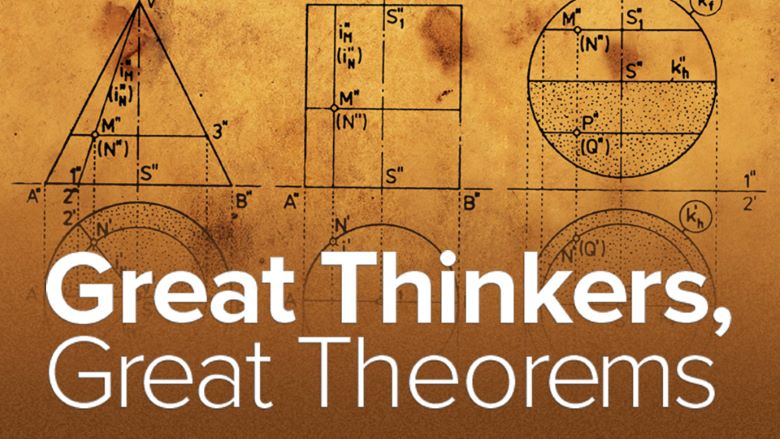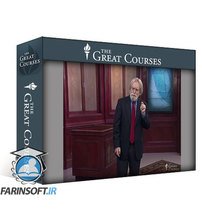Mathematics is filled with beautiful theorems that are as breathtaking as the most celebrated works of art, literature, or music. They are the Mona Lisas, Hamlets, and Fifth Symphonys of the field—landmark achievements that repay endless study and that are the work of geniuses as fascinating as Leonardo, Shakespeare, and Beethoven. Here is a sample:
- Pythagorean theorem: Although he didn't discover the Pythagorean theorem about a remarkable property of right triangles, the Greek mathematician Euclid devised an ingenious proof that is a mathematical masterpiece. Plus, it's beautiful to look at!
- Area of a circle: The formula for the area of a circle, A = π r2, was deduced in a marvelous chain of reasoning by the Greek thinker Archimedes. His argument relied on the clever tactic of proof by contradiction not once, but twice.
- Basel problem: The Swiss mathematician Leonhard Euler won his reputation in the early 1700s by evaluating an infinite series that had stumped the best mathematical minds for a generation. The solution was delightfully simple; the path to it, bewilderingly complex.
- Larger infinities: In the late 1800s, the German mathematician Georg Cantor blazed the trail into the "transfinite" by proving that some infinite sets are bigger than others, thereby opening a strange new realm of mathematics.
You can savor these results and many more in Great Thinkers, Great Theorems, 24 half-hour lectures that conduct you through more than 3,000 years of beautiful mathematics, telling the story of the growth of the field through a carefully chosen selection of its most awe-inspiring theorems.
Approaching great theorems the way an art course approaches great works of art, the course opens your mind to new levels of math appreciation. And it requires no more than a grasp of high school mathematics, although it will delight mathematicians of all abilities.
Your guide on this lavishly illustrated tour, which features detailed graphics walking you through every step of every proof, is Professor William Dunham of Muhlenberg College, an award-winning teacher who has developed an artist's eye for conveying the essence of a mathematical idea. Through his enthusiasm for brilliant strategies, novel tactics, and other hallmarks of great theorems, you learn how mathematicians think and what they mean by "beauty" in their work. As added enrichment, the course guidebook has supplementary questions and problems that allow you to go deeper into the ideas behind the theorems.
An Innovative Approach to Mathematics
Professor Dunham has been taking this innovative approach to mathematics for over a quarter-century—in the classroom and in his popular books. With Great Thinkers, Great Theorems you get to watch him bring this subject to life in stimulating lectures that combine history, biography, and, above all, theorems, presented as a series of intellectual adventures that have built mathematics into the powerful tool of analysis and understanding that it is today.
In the arts, a great masterpiece can transform a genre; think of Claude Monet's 1872 canvas Impression, Sunrise, which gave the name to the Impressionist movement and revolutionized painting. The same is true in mathematics, with the difference that the revolution is permanent. Once a theorem has been established, it is true forever; it never goes out of style. Therefore the great theorems of the past are as fresh and impressive today as on the day they were first proved.
What Makes a Theorem Great?
A theorem is a mathematical proposition backed by a rigorous chain of reasoning, called a proof, that shows it is indisputably true. As for greatness, Professor Dunham believes the defining qualities of a great theorem are elegance and surprise, exemplified by these cases:
- Elegance: Euclid has a beautifully simple way of showing that any finite collection of prime numbers can't be complete—that there is always at least one prime number left out, proving that the prime numbers are infinite. Dr. Dunham calls this one of the greatest proofs in all of mathematics.
- Surprise: Another Greek, Heron, devised a formula for triangular area that is so odd that it looks like it must be wrong. "It's my favorite result from geometry just because it's so implausible," says Dr. Dunham, who shows how, 16 centuries later, Isaac Newton used algebra in an equally surprising route to the same result.
Great Thinkers, Great Theorems includes many lectures that are devoted to a single theorem. In these, Professor Dunham breaks the proof into manageable pieces so that you can follow it in detail. When you get to the Q.E.D.—the initials traditionally ending a proof, signaling quod erat demonstrandum (Latin for "that which was to be demonstrated")—you can step back and take in the masterpiece as a whole, just as you would with a painting in a museum.
In other lectures, you focus on the biographies of the mathematicians behind these masterpieces—geniuses who led eventful, eccentric, and sometimes tragic lives. For example:
- Cardano: Perhaps the most bizarre mathematician who ever lived, the 16th-century Italian Gerolamo Cardano was a gambler, astrologer, papal physician, convicted heretic, and the first to publish the solution of cubic and quartic algebraic equations, which he did after a no-holds-barred competition with rival mathematicians.
- Newton and Leibniz: The battle over who invented calculus, the most important mathematical discovery since ancient times, pitted Isaac Newton—mathematician, astronomer, alchemist—against Gottfried Wilhelm Leibniz— mathematician, philosopher, diplomat. Each believed the other was trying to steal the credit.
- Euler: The most inspirational story in the history of mathematics belongs to Leonhard Euler, whose astonishing output barely slowed down after he went blind in 1771. Like Beethoven, who composed some of his greatest music after going deaf, Euler was able to practice his art entirely in his head.
- Cantor: While Vincent van Gogh was painting pioneering works of modern art in France in the late 1800s, Georg Cantor was laying the foundations for modern mathematics next door in Germany. Unappreciated at first, the two rebels even looked alike, and both suffered debilitating bouts of depression.
Describing a common reaction to the theorems produced by these great thinkers, Professor Dunham says his students often want to know where the breakthrough ideas came from: How did the mathematicians do it? The question defies analysis, he says. "It's like asking: ‘Why did Shakespeare put the balcony scene in Romeo and Juliet? What made him think of it?' Well, he was Shakespeare. This is what genius looks like!" And by watching the lectures in Great Thinkers, Great Theorems, you will see what equivalent genius looks like in mathematics.
01 Theorems as Masterpieces
02 Mathematics before Euclid
03 The Greatest Mathematics Book of All
04 Euclids Elements-Triangles and Polygons
05 Number Theory in Euclid
06 The Life and Works of Archimedes
07 Archimedes Determination of Circular Area
08 Herons Formula for Triangular Area
09 Al-Khwarizmi and Islamic Mathematics
10 A Horatio Algebra Story
11 To the Cubic and Beyond
12 The Heroic Century
13 The Legacy of Newton
14 Newtons Infinite Series
15 Newtons Proof of Herons Formula
16 The Legacy of Leibniz
17 The Bernoullis and the Calculus Wars
18 Euler, the Master
19 Eulers Extraordinary Sum
20 Euler and the Partitioning of Numbers
21 Gauss-the Prince of Mathematicians
22 The 19th Century-Rigor and Liberation
23 Cantor and the Infinite
24 Beyond the Infinite




